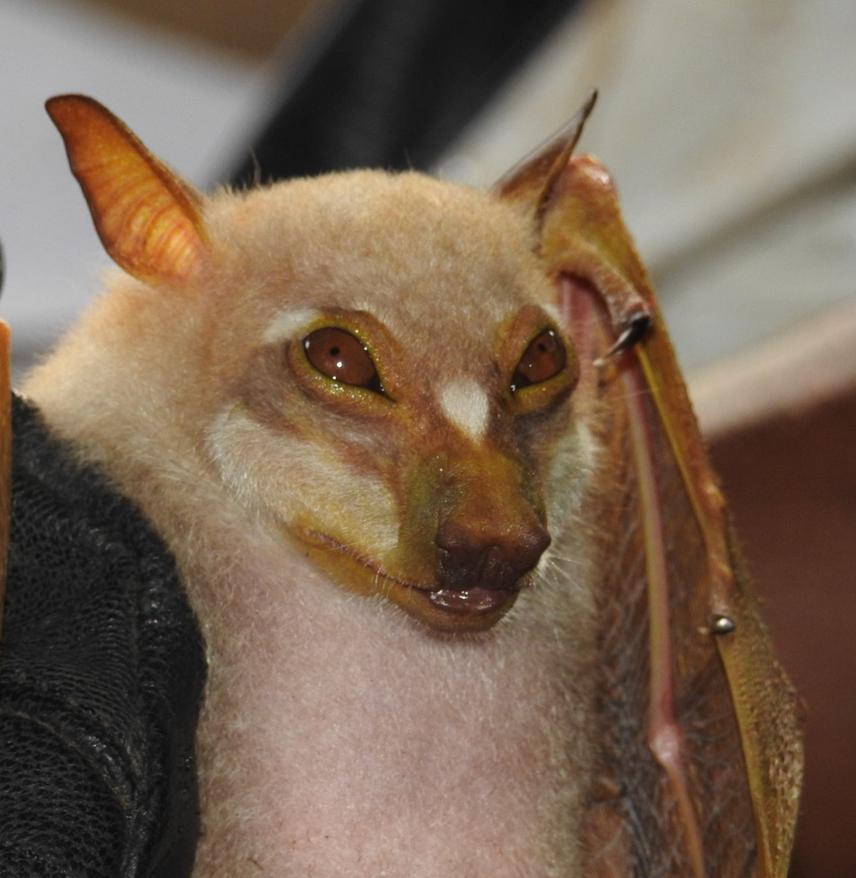Temidayo Adeyanju
Omo Forest Reserve (OFR) is key biodiversity area and a world biosphere reserve with a paucity of information on the effects of the anthropogenic activities on bat assemblages. However, it is currently under threat from anthropogenic activities such as logging, hunting and agricultural encroachment; threatening the long-term survival of bat and other taxa of conservation importance. This project aims to assess the perception and knowledge of residents on bat species; impact of land use and anthropogenic activities on bat species composition and activities and use the information to improve on the conservation education and awareness within the reserve.

Pohle’s Fruit Bat- Casinycteris ophiodon- New species to Nigeria.
In-depth group discussion and structured questionnaires will be used to assess information on perception, knowledge and attitudes of residents towards bat species conservation in selected communities (Imoba, Etemi, Ese-Oke and Baoku). Discussions will be based on the current threats associated with their activities and the currents rate of forest loss. The information gathered will be used to address threats relating to land loss during the workshop outreach within the project time frame.
Mist nets and bat detector protocols will be used to sample bat species. Mist nets, harp trap, and bat detectors will be placed randomly in the study sites for 40 nights (20 nights in dry season, 20 nights in the wet season and three nights in each land-use types). Five mist nets of 2.6 m height and 12 m length, one harp trap, one triple high net and a bat detector (SM4FSBAT) will be used per sampling night in each land-use type. A call library will be built from captured bats using full spectrum real time SM4 Bat FS detector. The call library and sound analysis will be carried out following Adrià López-Baucells et al. (2016). Captured bats will be identified to species level using reference texts (Rosevear, 1965; Happold and Happold, 1987; Happold and Happold, 2013). All individuals captured will be sexed and aged and morphological features (fore arm length, ear length, tibia length, body mass) will be taken appropriately. Tissue samples will be taken from the left wing (a wing punch) as DNA samples and stored in 70 % ethanol for molecular work especially for difficult species identification.
Conservation workshops, trainings and outreaches will be used to convey some of the results obtained from the field survey; after which discussions on the measures to combat some of the problems associated with habitat disturbance will be highlighted. Other themes, such as the challenges faced in the obtaining of forest resources will be discussed and a follow up of the benefits acquired from the existing conservation programs carried out by the onsite conservation body. Opportunities will be given for stakeholders to give their views on the possible measures that can be implemented with the forest managers for habitat conservation, how this process could be improved upon and activities that will reduce habitat fragmentation and destruction.